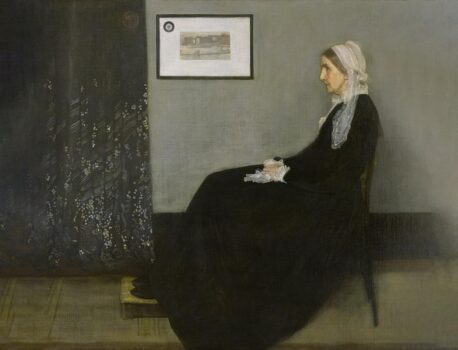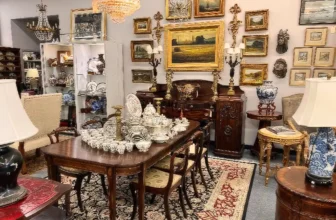Where Is Arrangement in Grey and Black No. 1 Painting
In the quiet halls of the Musée d’Orsay in Paris, one painting arrests the eye not with bold color or chaos, but with restraint, poise, and stillness. It is an image so iconic that many know it by a simpler title, Whistler’s Mother. Yet, its original title, Arrangement in Grey and Black No. 1, reveals far more about its creator’s intention and the artistic revolution it quietly championed.
This is not just a portrait of a seated woman. It is a radical statement about art, abstraction, and emotion without theatrics. In this post, we will explore the meaning behind Arrangement in Grey and Black No. 1, its symbolism, artistic significance, and the story of how one man’s mother came to represent a turning point in Western art history.
The Artist Behind the Canvas: James Abbott McNeill Whistler
Born in 1834 in Lowell, Massachusetts, James Abbott McNeill Whistler was an American artist who spent most of his life in Europe. Deeply influenced by French Realism, Japanese art, and the musicality of composition, Whistler rejected the dominant notion that art should tell stories or deliver moral messages. He believed in “art for art’s sake,” where beauty and harmony were sufficient justification for a painting’s existence.
By the 1860s, Whistler was a well-established figure in London’s art scene. He was known for his bold personality, experimental techniques, and combative stance against Victorian norms. Unlike his contemporaries, who often packed paintings with allegory and drama, Whistler preferred suggestion over explanation.
This philosophy culminated in his most famous work: Arrangement in Grey and Black No. 1.
How Arrangement in Grey and Black No. 1 Was Painted
The painting was completed in 1871 in London. Whistler had originally planned to use a professional model, but when the model failed to show up, he turned to the person closest to him, his mother, Anna McNeill Whistler. At the time, she was living with him in Chelsea after the death of her husband.
According to Whistler’s biographers, the painting’s composition was difficult to achieve. Whistler originally wanted his mother to stand, but she was elderly and could not hold the pose for long. Eventually, she was seated in profile, with her hands folded in her lap and feet resting on a footstool. The setting was Whistler’s own studio, featuring a sparse background with a draped curtain and a framed print on the wall.
Despite its modest content, the painting took months to complete. Whistler meticulously balanced tonal values, emphasizing grays and blacks to create what he saw as a visual harmony, much like a musical arrangement. The title itself underscores this intention, he called it an “Arrangement,” not a portrait, to shift the focus from identity to aesthetics.
What Is Arrangement in Grey and Black No. 1 All About?
At first glance, the painting seems deceptively simple: an elderly woman sits in side profile, dressed in a long black dress, against a gray wall. But Whistler intended it to be far more than a portrait. The painting is a study in composition, tone, and form. It is about balance, not just physical but emotional.
The muted color palette creates a subdued atmosphere that invites reflection rather than reaction. The shapes, the vertical line of the curtain, the rectangular frames, the curve of the chair, interact like notes in a musical score. Every element is placed with purpose. Even the folds in the curtain seem to echo the quiet dignity of the woman herself.
Though Whistler insisted on its abstract qualities, audiences could not help but see emotion in it. The seated woman, quiet, composed, patient, seemed to represent maternal virtue, resilience, and stoicism.
Symbolism and Meaning
Whistler famously resisted attaching symbolic interpretations to his work. However, the world around him did not. To many, the painting became a universal icon of motherhood.
Here are several interpretations often associated with the painting:
1. Maternal Devotion
Anna Whistler, dressed in mourning attire, projects the image of a mother’s quiet sacrifice and dignity. Though Whistler denied sentimentalism, the pose and presentation echo Victorian ideals of femininity and family.
2. Mourning and Loss
Her black dress and somber surroundings evoke a sense of grief. Her husband had died in 1849, and Whistler’s own life had been marked by personal and professional loss. The painting thus becomes a meditation on aging, memory, and endurance.
3. Abstraction and Aesthetic Harmony
By naming the piece an “Arrangement,” Whistler emphasized that the work was primarily an exploration of visual harmony, not a biographical document. He viewed the composition as similar to a piece of music, structured, mathematical, and emotionally resonant.
4. The Everyday as Elevated
Whistler’s focus on a domestic, intimate moment, stripped of grandeur or mythology, challenged prevailing notions of what was worthy of fine art. He elevated the ordinary into the timeless.
What Is Happening in the Painting?
Nothing dramatic occurs in the scene. That is precisely its power.
The elderly woman sits in profile, eyes forward, lips closed, hands clasped. She is not interacting with anyone. She does not acknowledge the viewer. Her stillness is total.
There is a deep meditative quality to this moment. She might be thinking. She might be remembering. She might simply be sitting, as mothers have done in silent patience across generations. Her presence becomes monumental precisely because it is so unassuming.
It is this quiet dignity that gives the painting its emotional gravity.
What Type of Art Is Arrangement in Grey and Black No. 1?
The painting belongs to several overlapping artistic traditions:
1. Tonalism
Whistler was a major figure in Tonalism, a movement characterized by soft transitions of color, mood-focused imagery, and limited palettes. The gray and black tones here are a textbook example.
2. Realism
While not a Realist in the strictest sense, Whistler shared the Realist aim of depicting modern life without idealization. His mother’s wrinkles, her modest dress, and the domestic setting align with Realist values.
3. Aestheticism
Whistler was a central figure in the Aesthetic Movement, which championed the idea of “art for art’s sake.” Arrangement in Grey and Black No. 1 was its manifesto. The beauty of form, not the message, was paramount.
4. Proto-Modernism
Whistler’s rejection of narrative and his focus on composition over content made him a precursor to Modernist art. His insistence that the painting was an “arrangement” rather than a “portrait” was revolutionary in 1871 and paved the way for abstraction in the 20th century.
Where Is Arrangement in Grey and Black No. 1 Located Today?
The painting resides in the Musée d’Orsay in Paris, one of the most prestigious art museums in the world.
Interestingly, the painting was originally rejected by the Royal Academy in London. Whistler was deeply hurt by the snub, although it was later exhibited. The French, however, embraced the work. In 1891, the French government bought the painting and gave it a place of honor in their national collection, a rare recognition for a living foreign artist.
The painting’s presence in Paris rather than London or Washington is often viewed as a symbolic reminder that Whistler’s true artistic home was in Europe, not the United States.
Cultural Impact
Though initially misunderstood, Arrangement in Grey and Black No. 1 eventually became a cultural icon.
It has appeared in:
U.S. postage stamps, symbolizing motherhood
Parodies in films, cartoons, and advertisements
National exhibitions, especially during Mother’s Day celebrations
Pop culture references, from Mr. Bean to The Simpsons
The image has transcended its creator’s intentions, becoming a stand-in for maternal affection, patience, and virtue across cultures.
Yet ironically, Whistler would have bristled at this sentimentalization. He once wrote:
“Art should be independent of all claptrap… the picture should exist for its own sake.”
But the world had other ideas.
In an age of noise, distraction, and spectacle, Arrangement in Grey and Black No. 1 remains a striking counterpoint. It reminds us that stillness can be as profound as action, that restraint can convey emotion more powerfully than excess, and that art need not shout to be heard.
What began as a practical substitution, a mother sitting in for a missing model, became a meditation on beauty, memory, and the endurance of quiet strength. Whistler may have seen it as an “arrangement,” but to the world, it is something more.
It is the soul of a son’s regard for his mother, crystallized in gray and black.
And in that, perhaps, lies the ultimate harmony.




